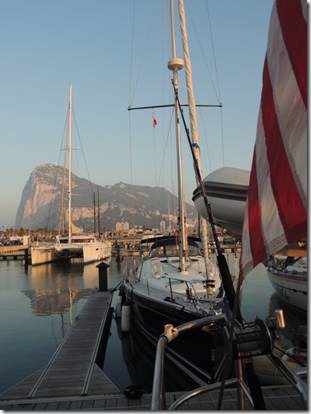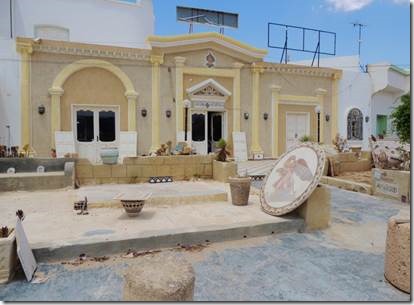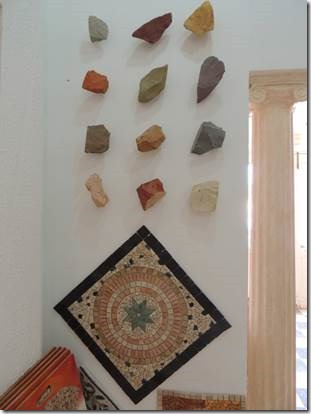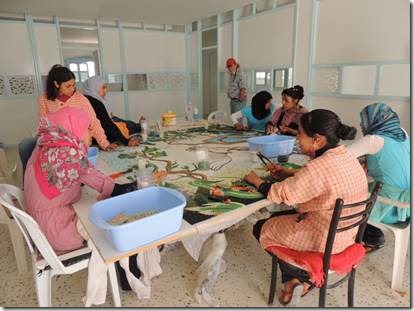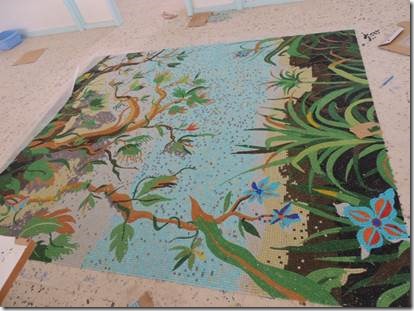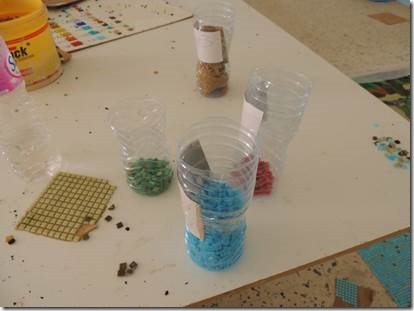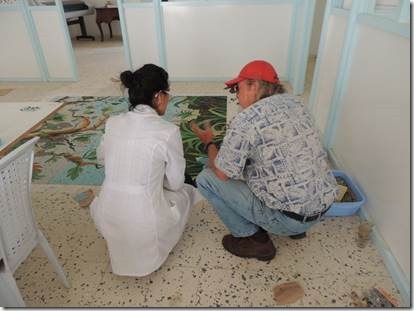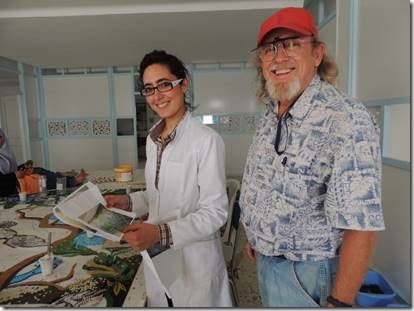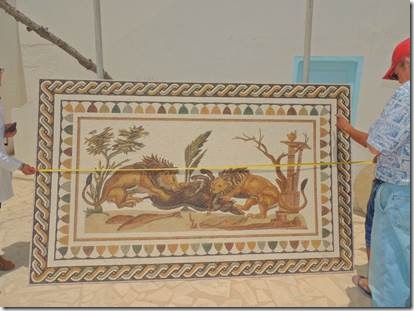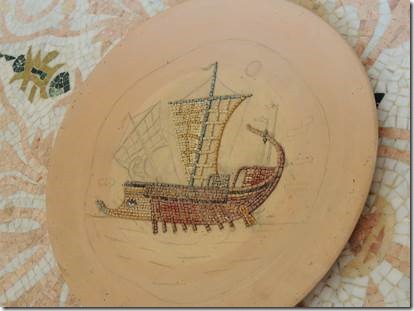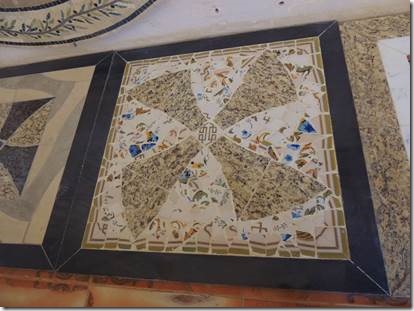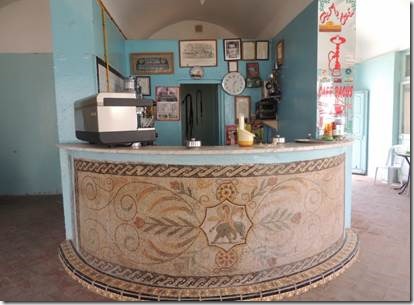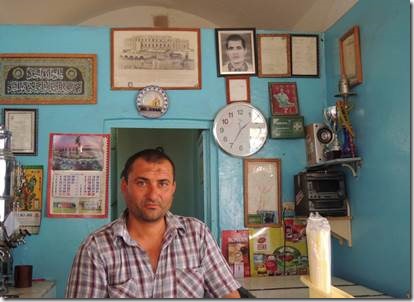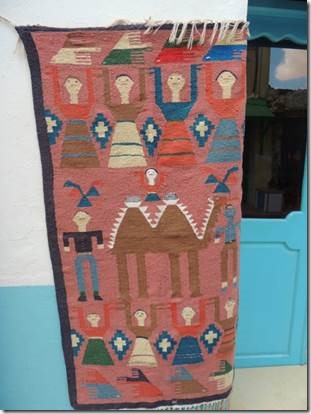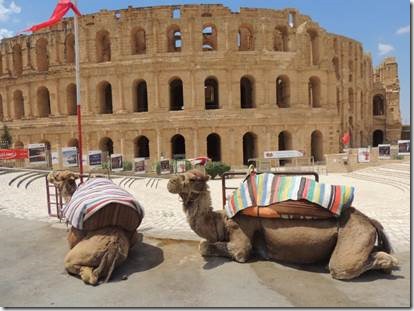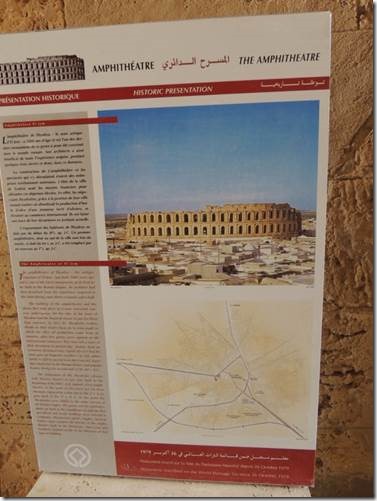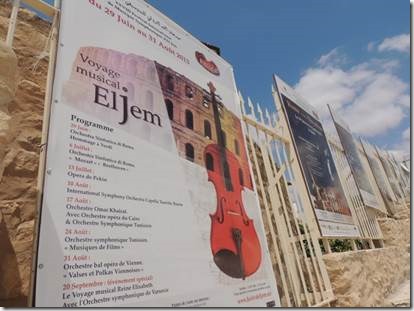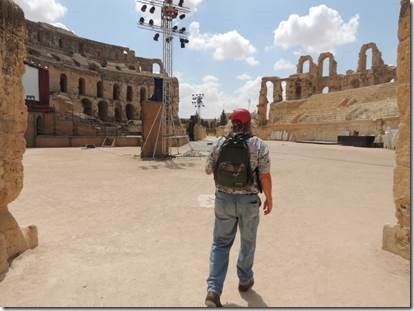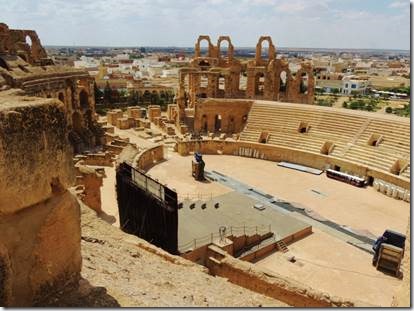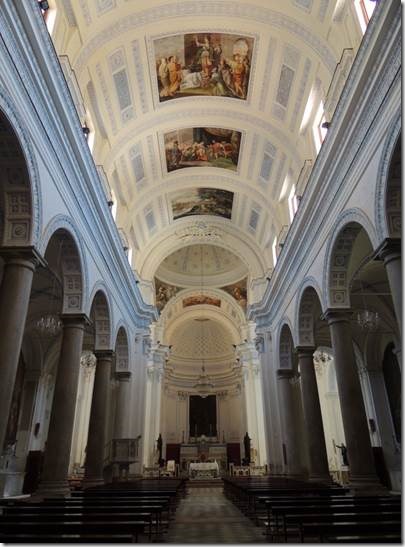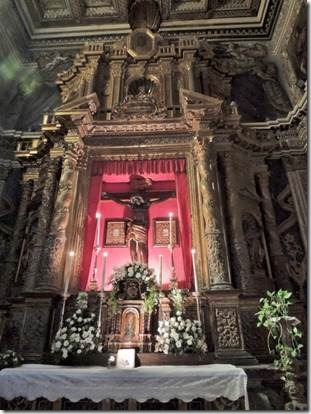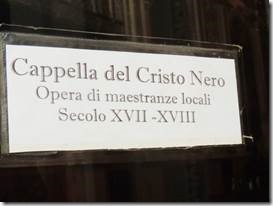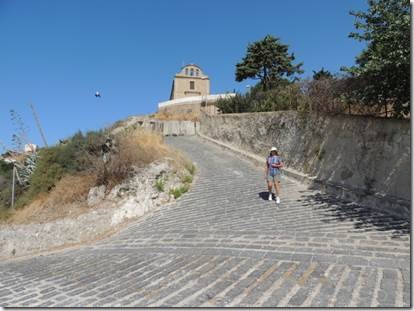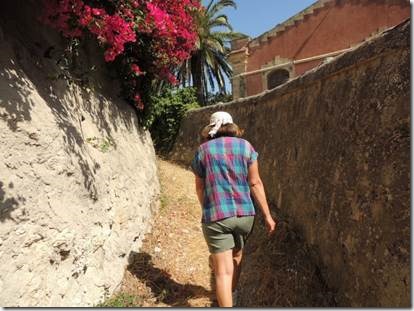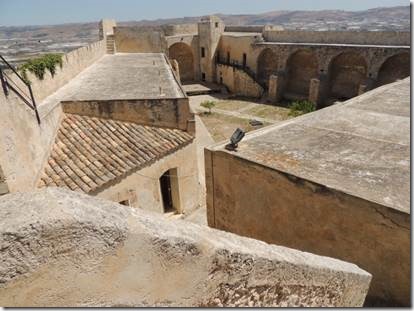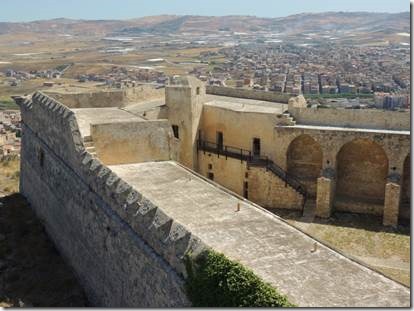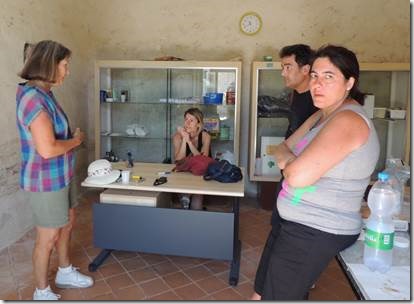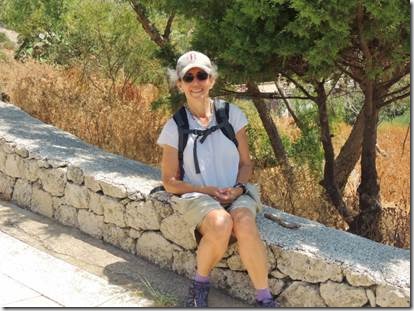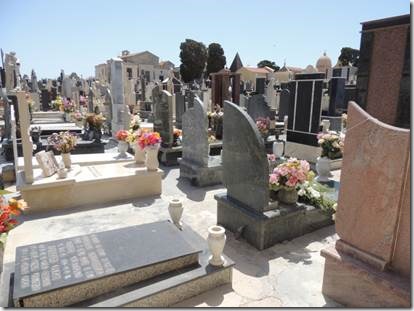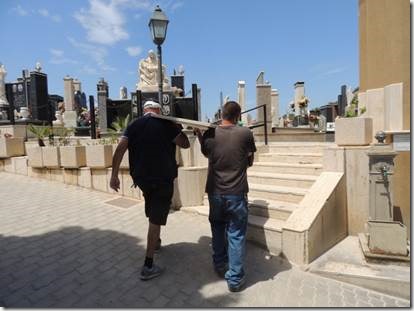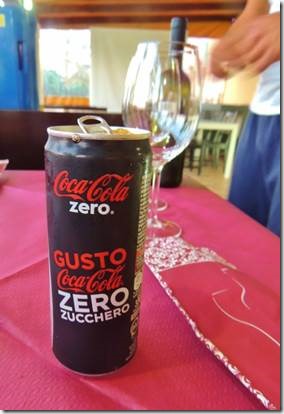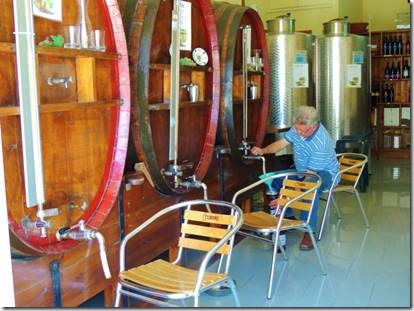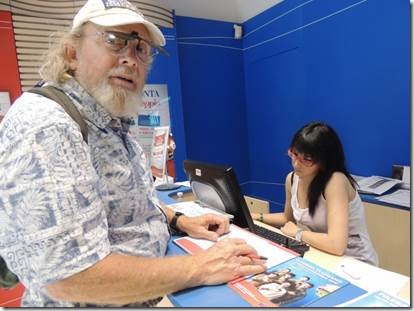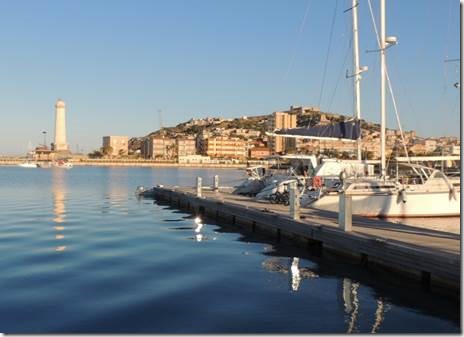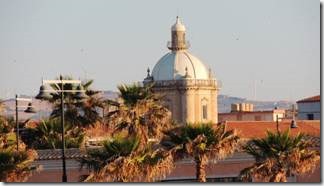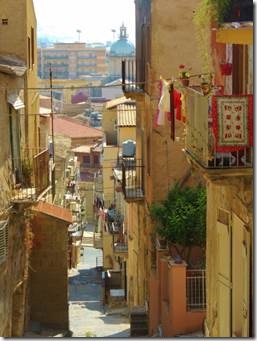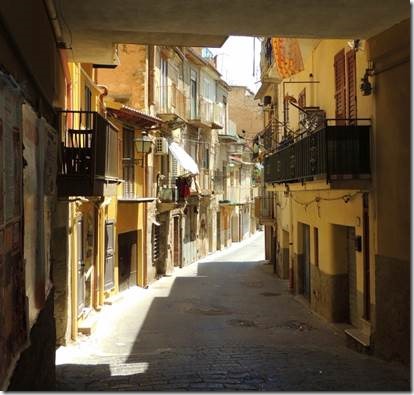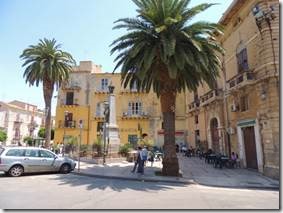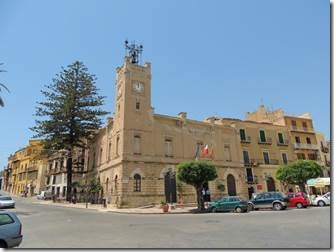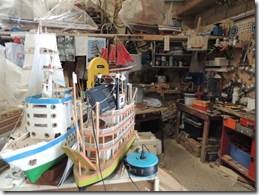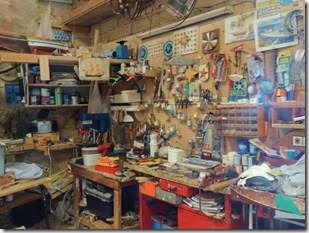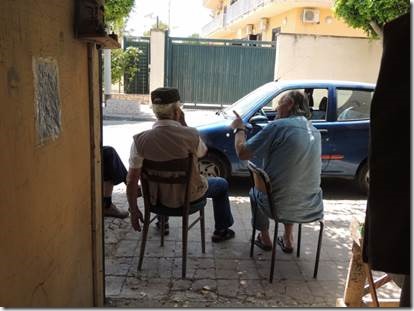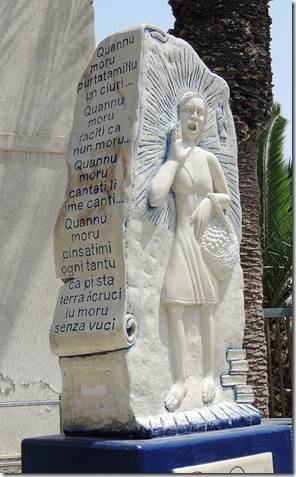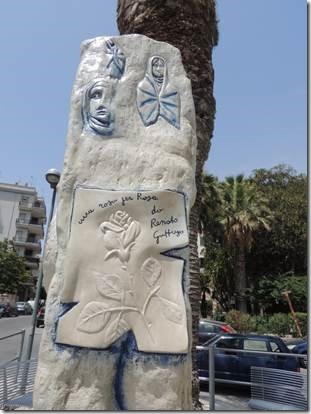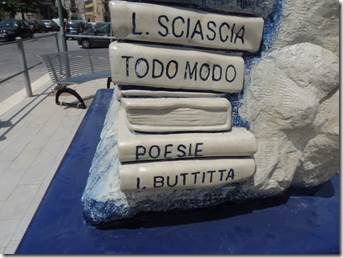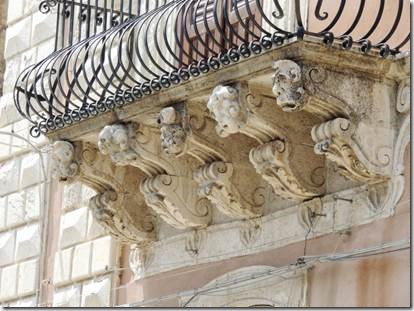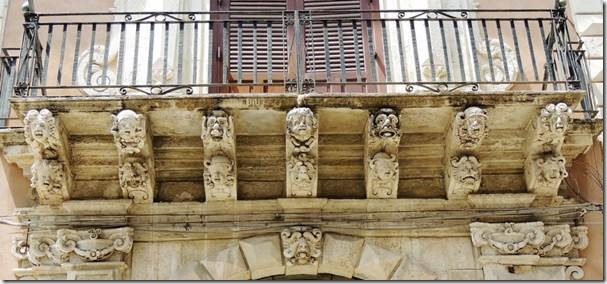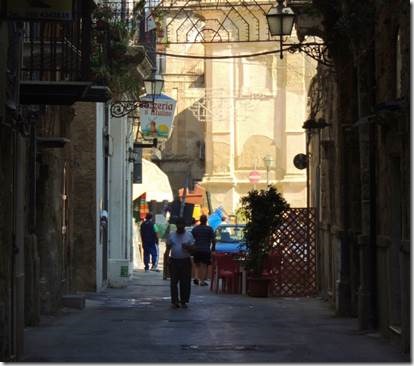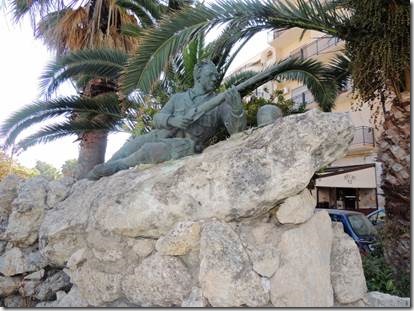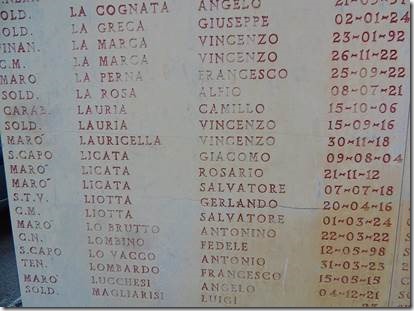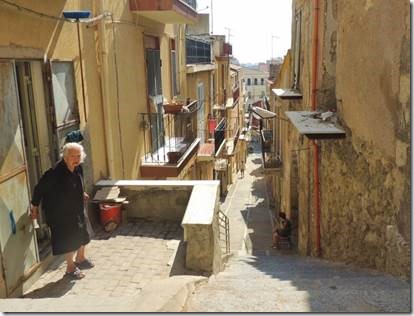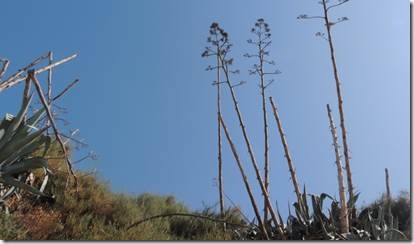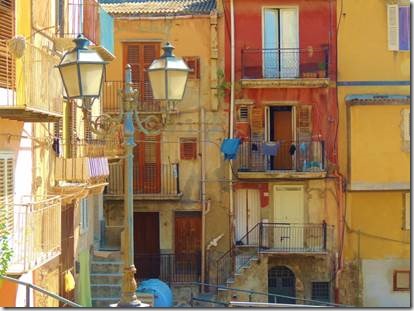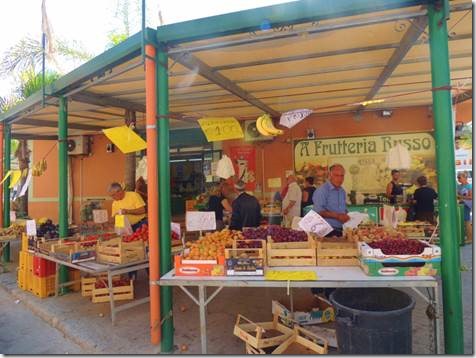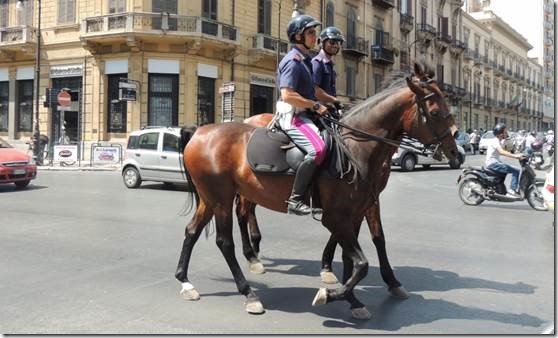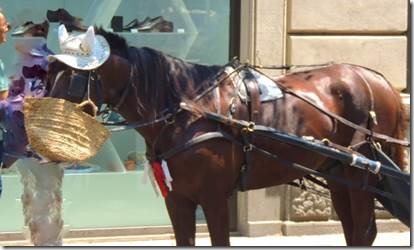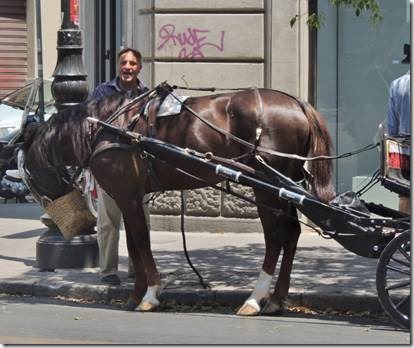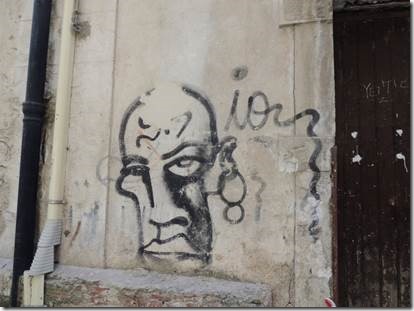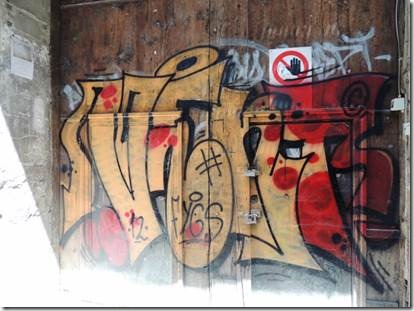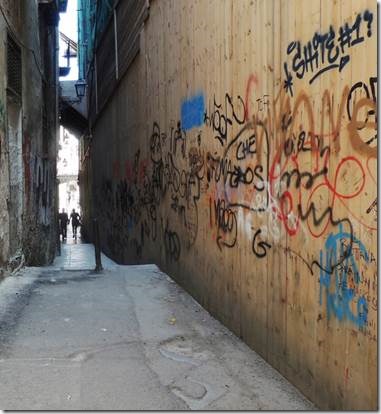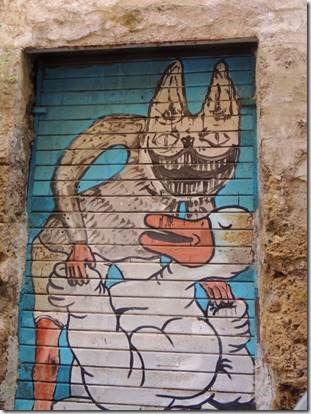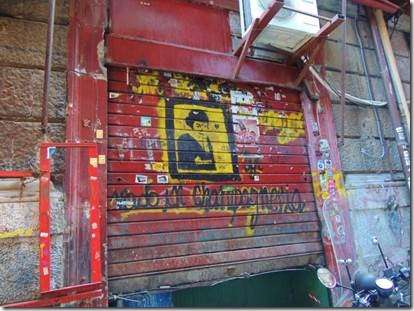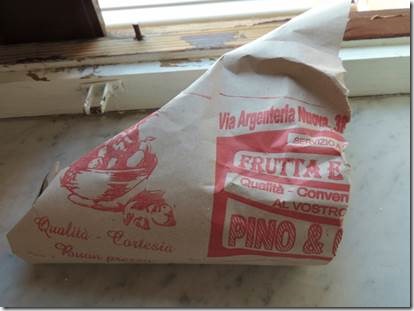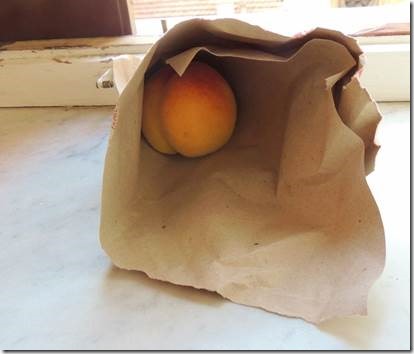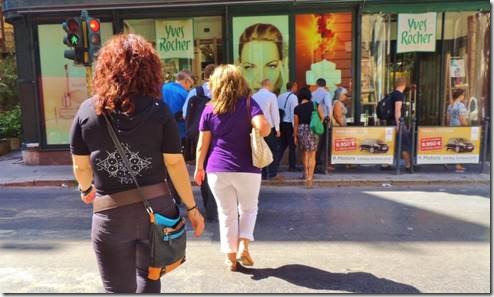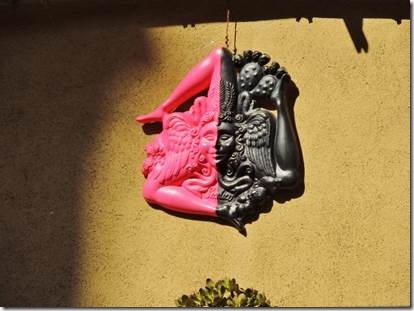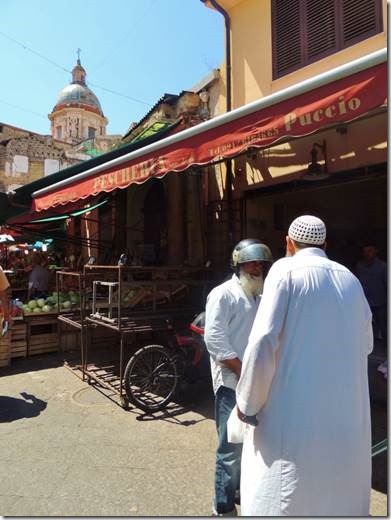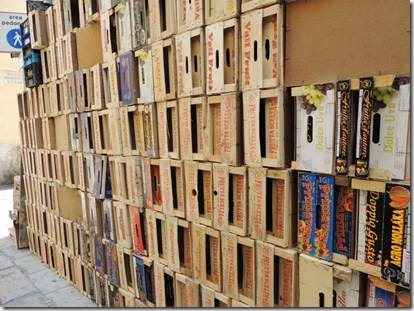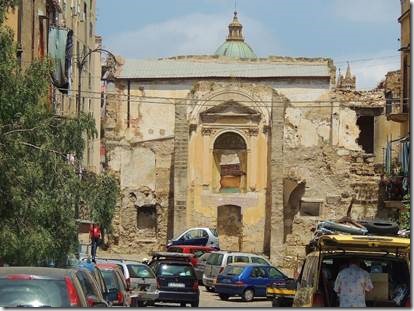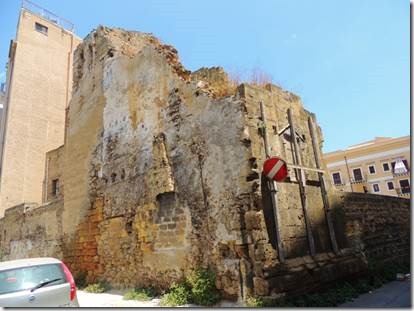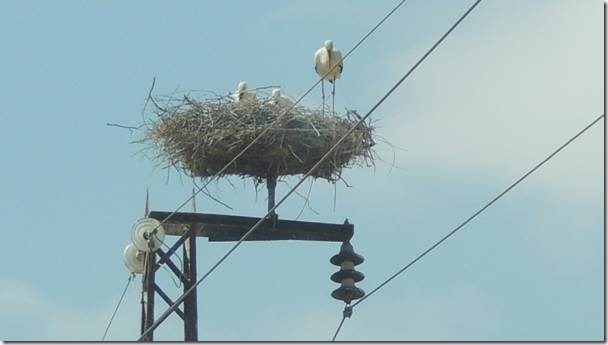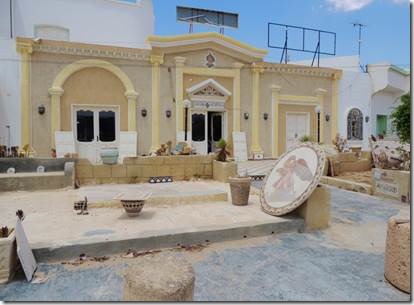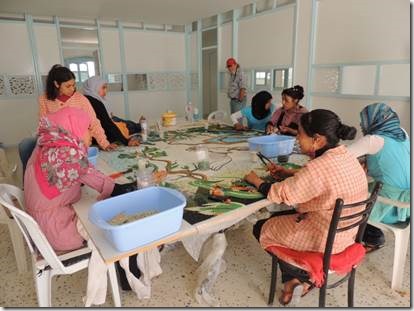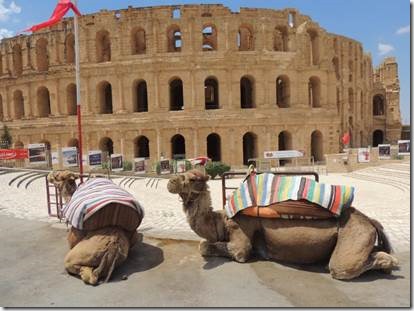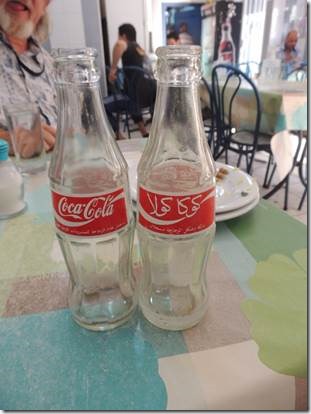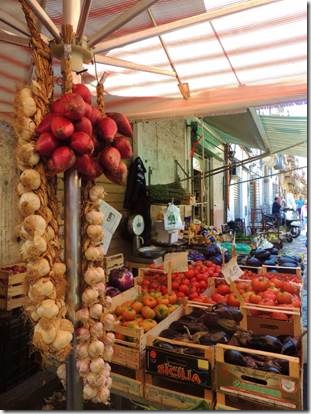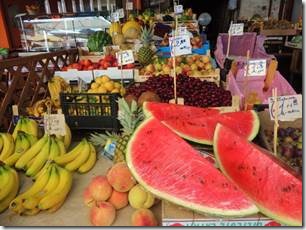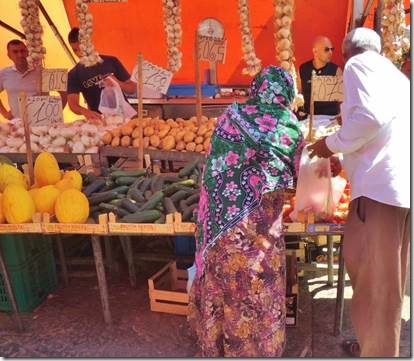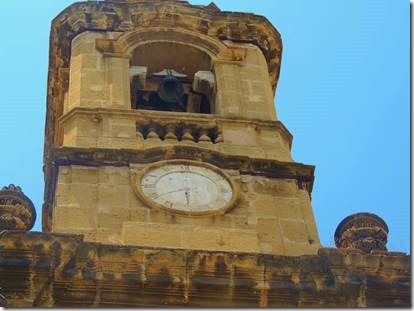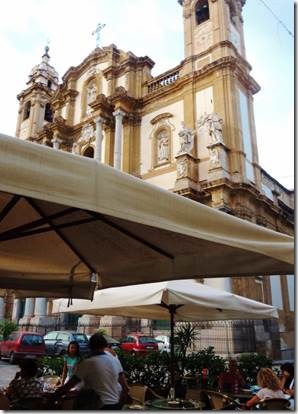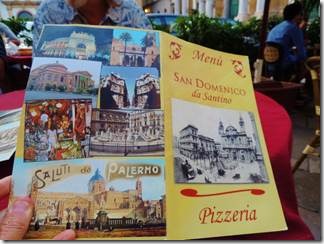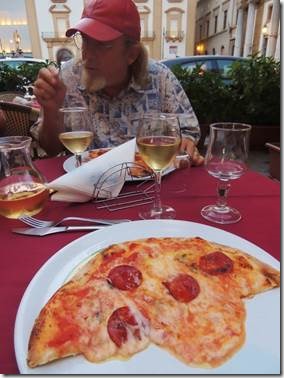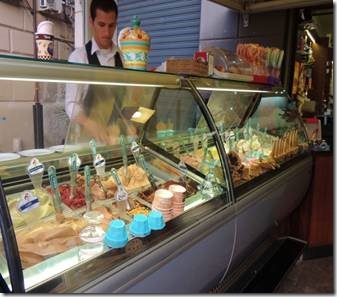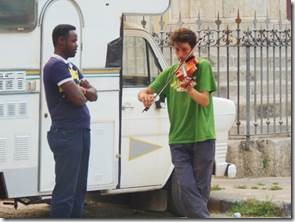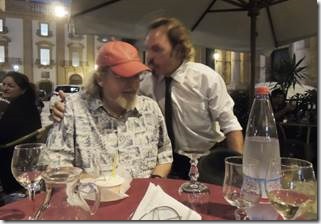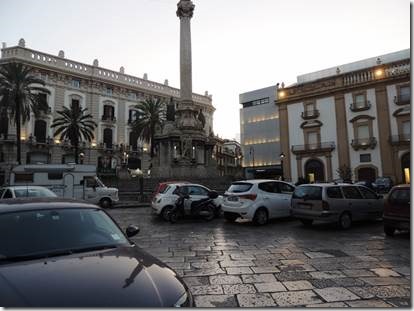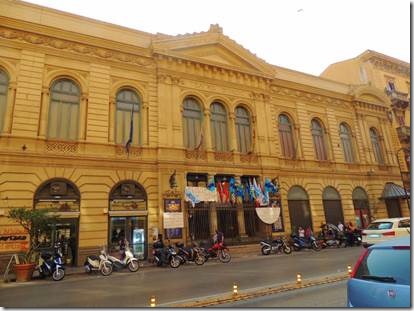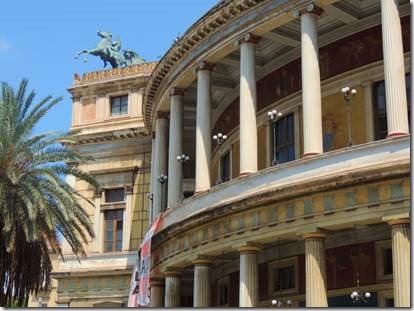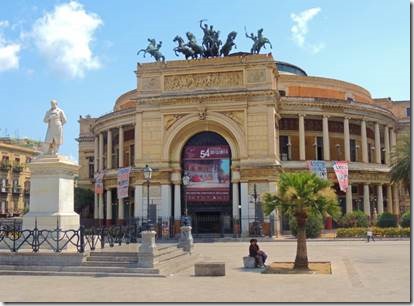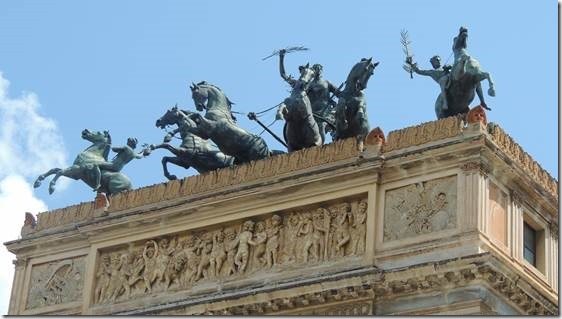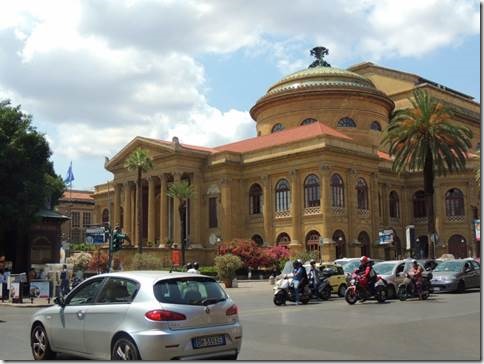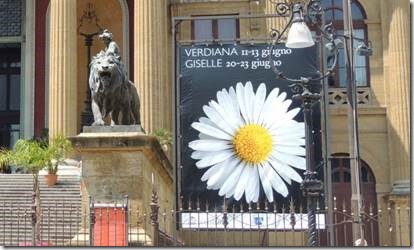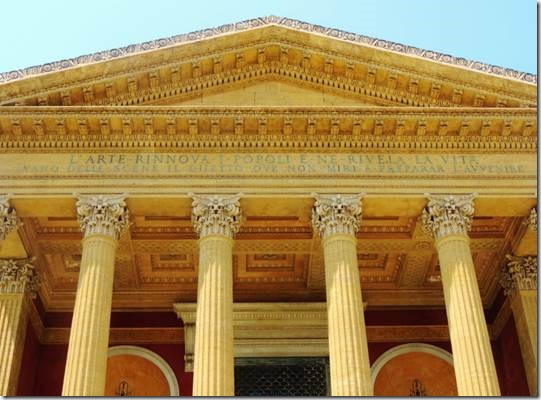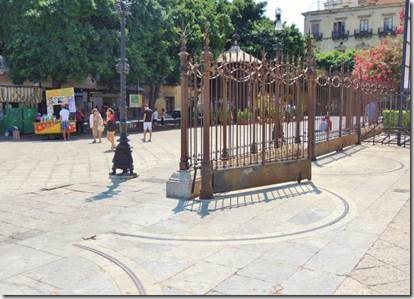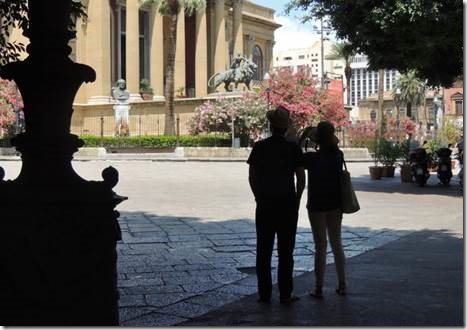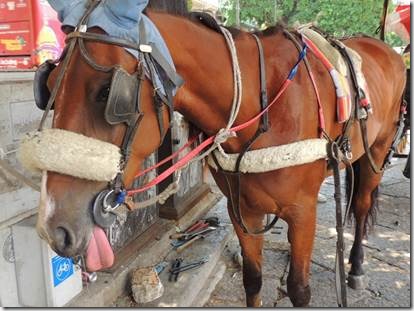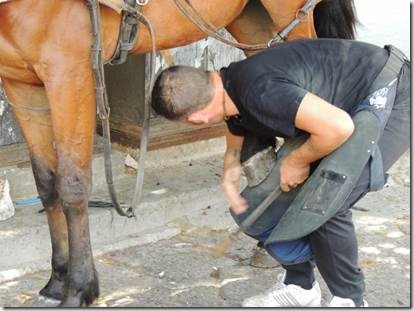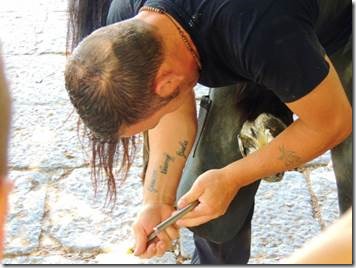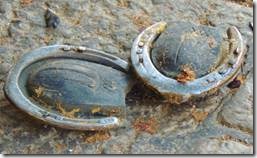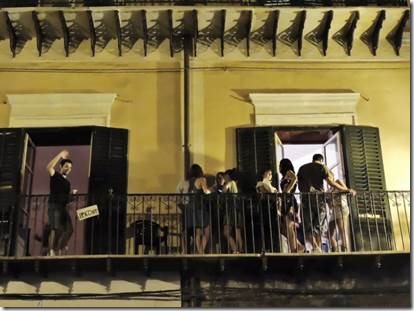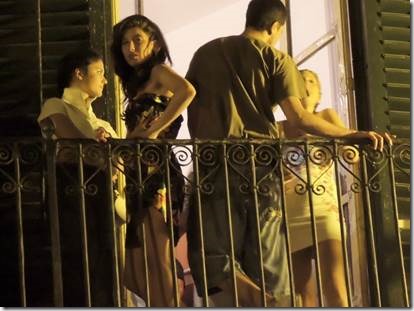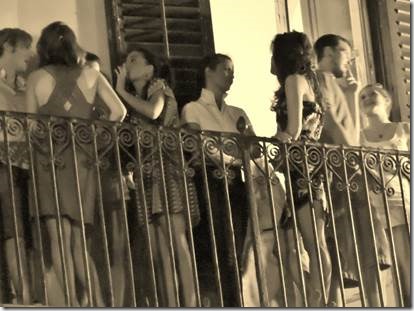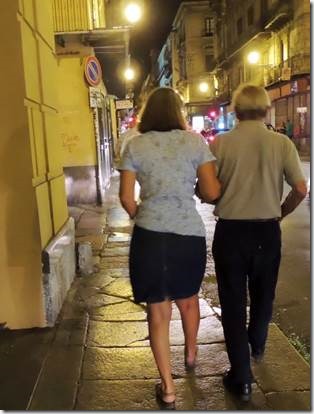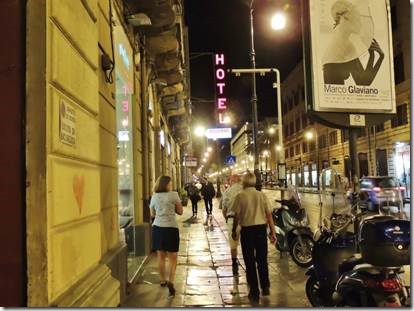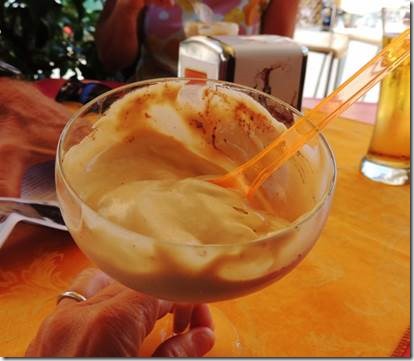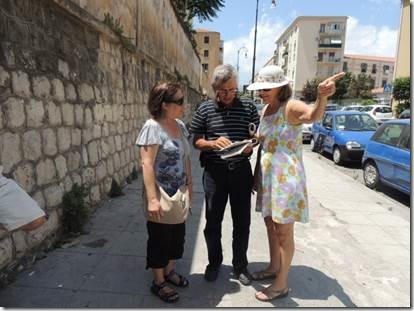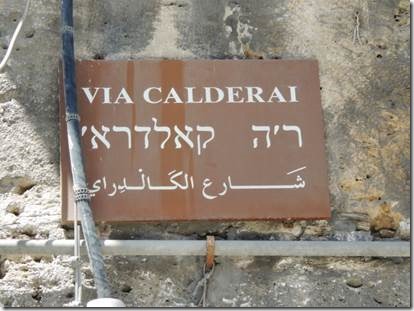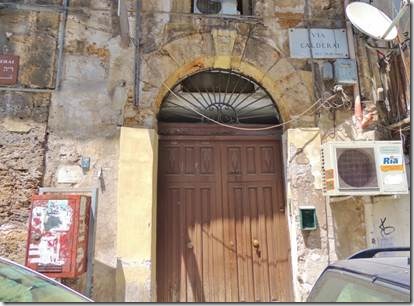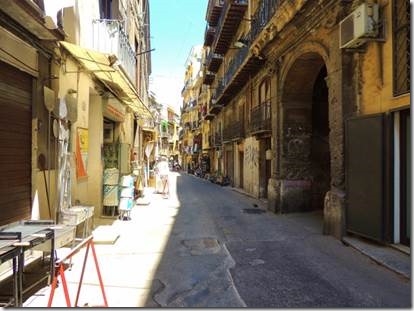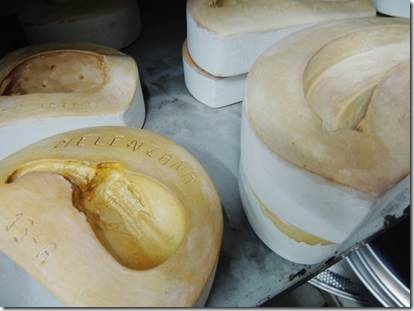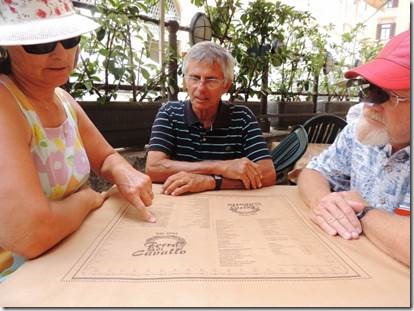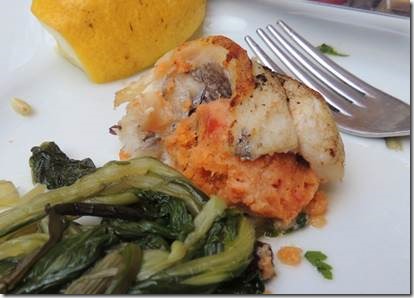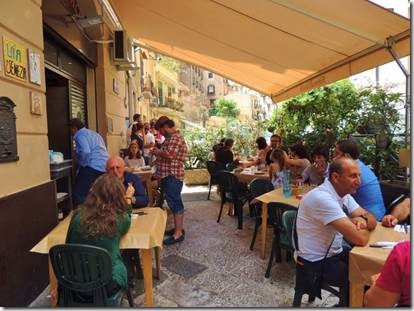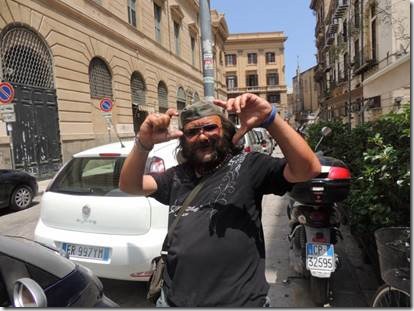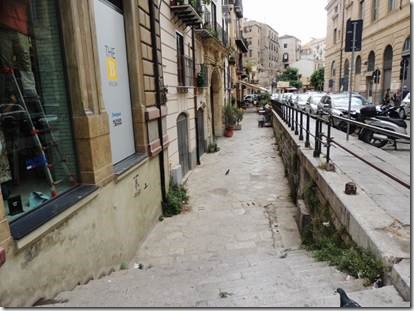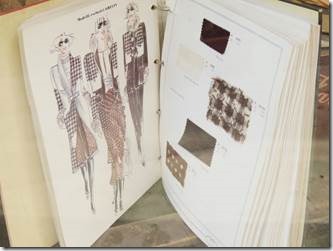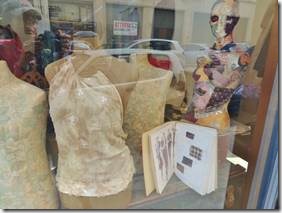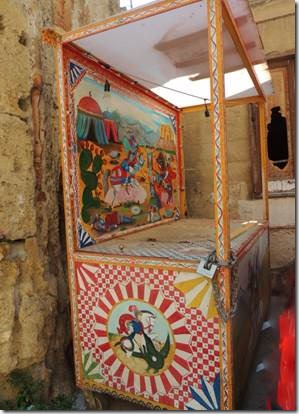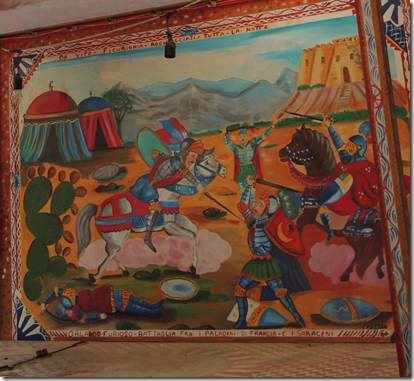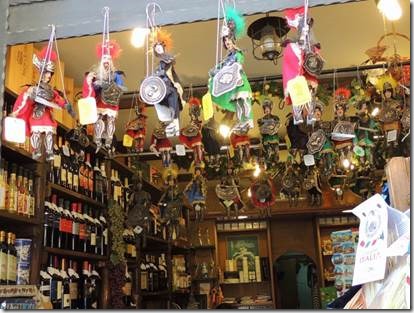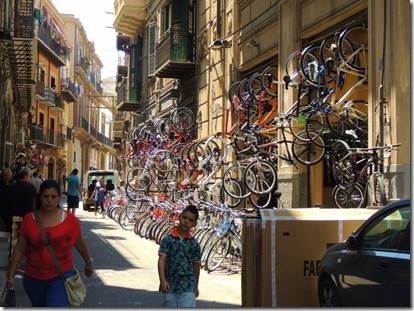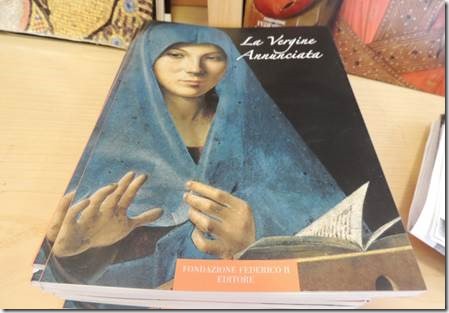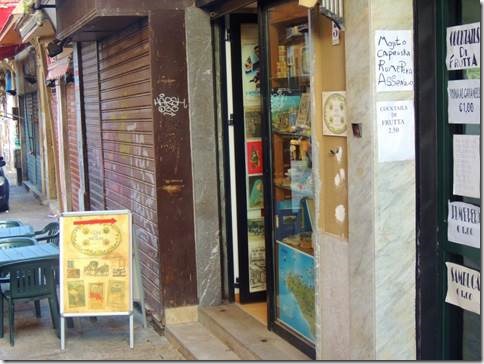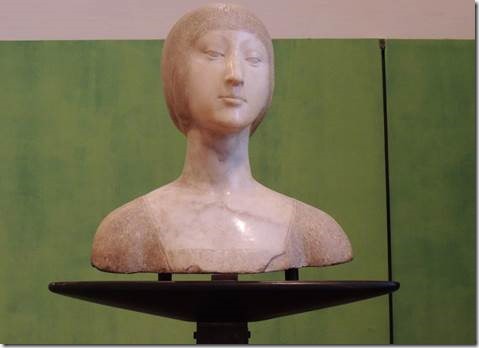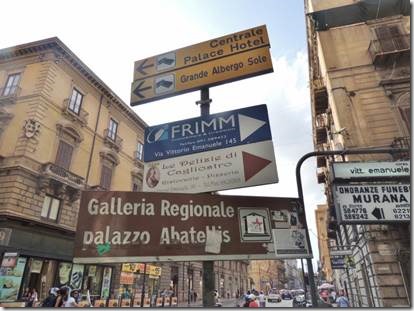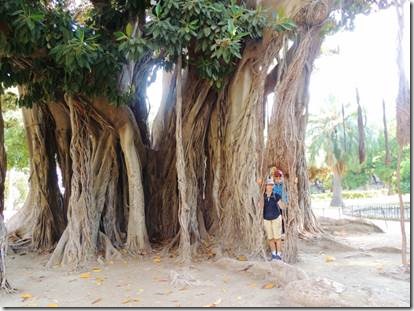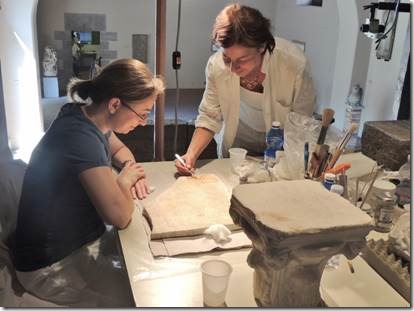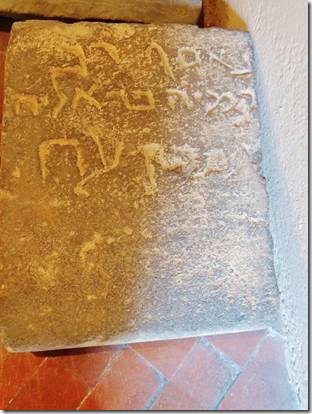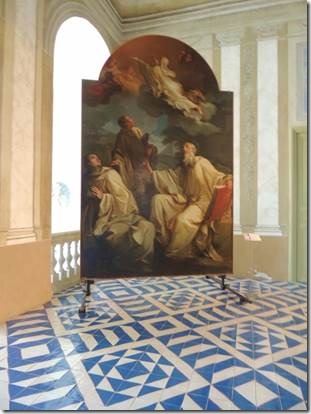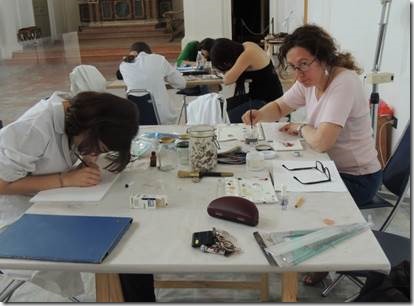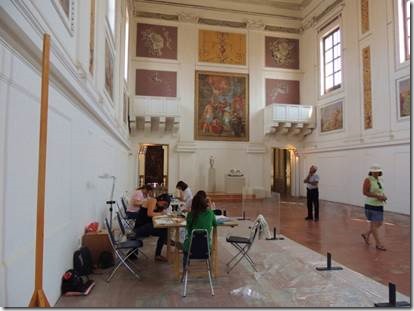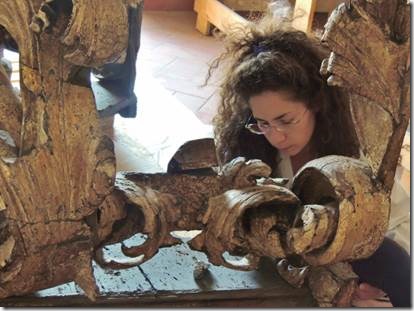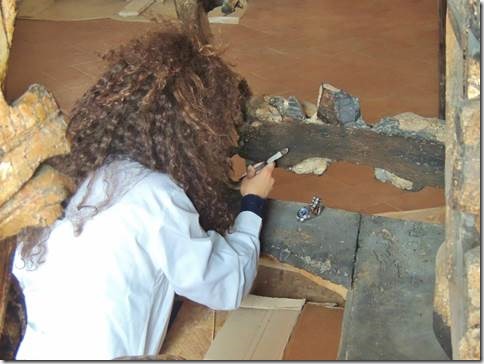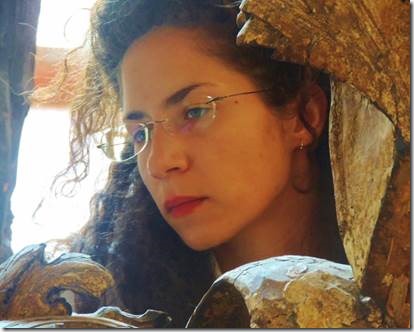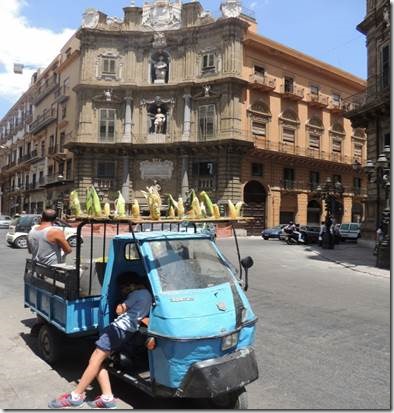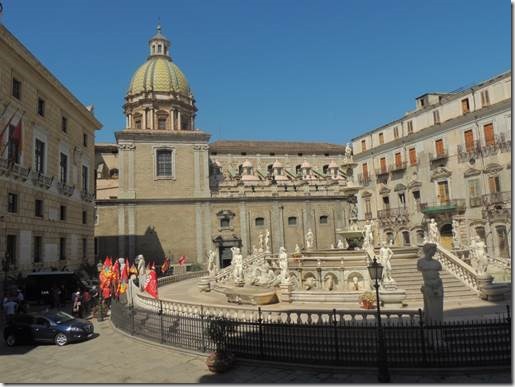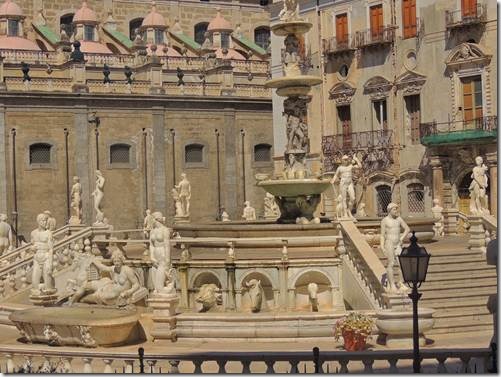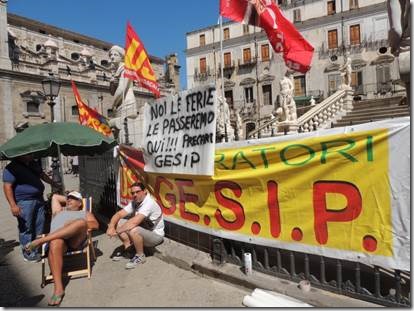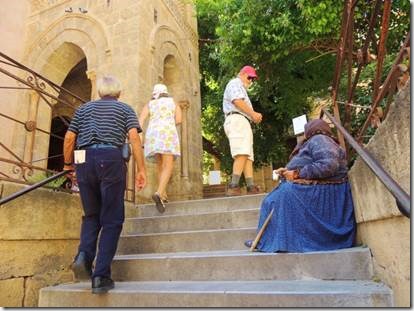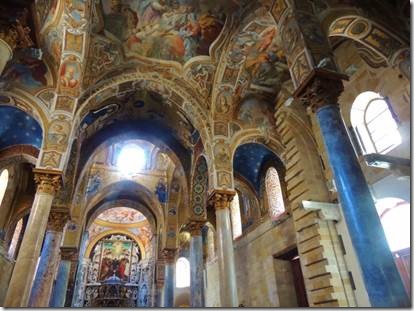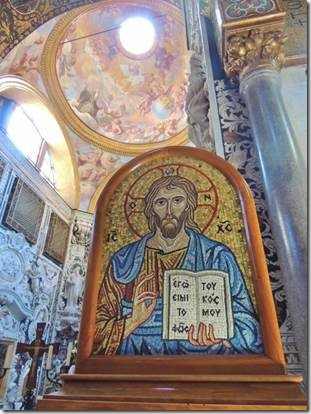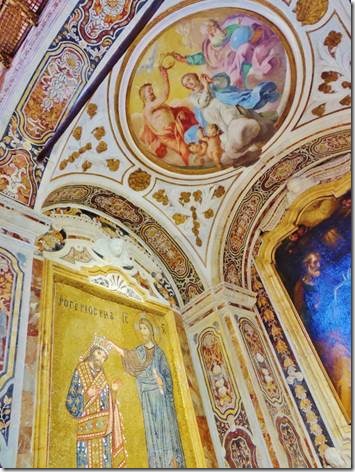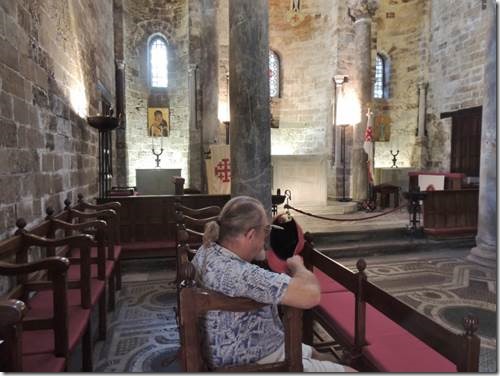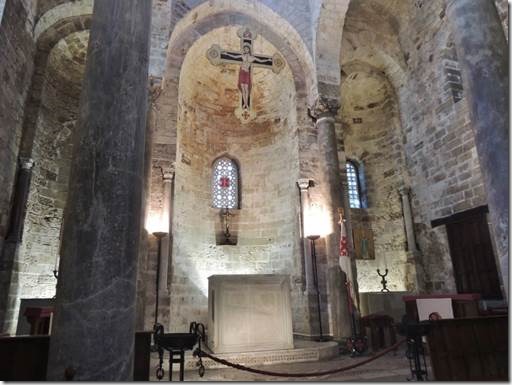Hola ( which I learned from Sue Kelly is pronounced Ola and not Hola which I’d have known if I’d thought about it.
Our friends Sue and Ed Kelly and their Iowa friend Norm walked over from their marina in Gibraltar to visit us this afternoon and show us how to cross the border. No problem there; just walk one way from Spain to Gibraltar and the way back from Gibraltar to Spain. We’ll go back to visit them tomorrow and see their marina which was booked up so we came to Spain instead. Sue and Ed are also heading to Saint Cat’s Dock in London. They were there last year and it was their enthusiasm that convinced us and then our enthusiasm that convinced them to go back. So we’ll be seeing them on and off on our way to London.
This email is the first of several about our trip to Tunisia.
Ru
Rock of Gibraltar seen from DoraMac
Remember the TV show Wild Kingdom? Revered Ken emailed me mentioning Prudential Insurance which had the Rock as a logo but I remembered The Rock of Gibraltar from Wild Kingdom and that was Mutual of Omaha. I needed to check myself and found this confirmation.
“ When passing through the Straights of Gibraltar I could hear the radio and early TV voice of zoologist Marlin Perkins (1905–1986). I remember how excited I got as a lad to hear the Mutual of Omaha Insurance Company Rock of Gibraltar ad, which led me to many fascinating animal adventures. After the commercial, Perkins would pause with so pregnant a moment of anticipation that I would catch my breath and wait to be tantalized by the Wild Kingdom drama about to unfold.”
http://www.rrecord.com/-news/2012/2-2-12/church1.asp
Sue, Ed and Norm spent 5 hours hiking up and down. I’m hoping to talk Randal into going too. He wants the cable car so we might have to ride one way and walk the other.
Ru
DoraMac
Tunisia
For us Tunisia really was just a fuel stop on our way to other places. Randal wanted to see its famed mosaics and I’d hoped to see the oldest synagogue in Africa. And I was looking forward to its difference from Greece and Sicily. So many people we know have really enjoyed their time in Tunisia. Well we definitely filled up with diesel fuel: over 5000 litres worth. And we had a wonderful mosaics experience. We didn’t make it to Djerba Island to see the synagogue as it was too long a drive for the short time we had. And we missed the Medina and Grande Synagogue in Tunis as well as the American military cemetery in Carthage. We took a deliberate pass on Sidi bou Said which was like visiting Provincetown, MA in the summer. Too many people in too small of a space. I’m sure when artists Paul Klee, Kandinsky, Matisse, August Macke and Louis Millliet journeyed there in the early 20th century it was a much different Tunisia than we saw. It was only in the small places like El Jem and a road side village market that we saw an “not tourist” and more interesting (for us) Tunisian way of life. If it were all changing for the better then that would be a good thing. But many folks whom we spoke with didn’t see it that way. The revolution’s promised changes don’t seem to be reaching everyone. And the tourist boom seems largely to be benefitting huge “all inclusive” hotels so small local restaurants and cafes lose out. We’d heard complaints about “all inclusive” in North Cyprus and Turkey also. I have to say that I knew nothing about Tunisia when we arrived there and learned very little from our stay. I bought 4 Tunisia books through Kindle. Two were too dumb for words and I’ve no idea yet what they’re about…..some 20 something male finding himself…in Tunisia. The blurb made it sound more as if Tunisia was the subject of the book and not the author’s ego. One book was about travels pre WW 2 with all of the stereotypes one found in those years. But he at least wrote about Tunisia. One was a not great Tunisia Guide. The most useful information came from friends who’d been there which was why we visited El Jem.
We did meet individual merchants who were quite wonderful. And between the mosaics and books/videos about mosaics Randal picked and the small pomegranate mosaic, the village market terracotta pitcher, a woven straw baskets and the El Jem Berber rug I chose, we left a great many dinars behind in Tunisia. Plus paying for all of that fuel! So Tunisia did well by us.
Our complaints were with the really pushy hawkers who make me refuse to stop and look. And with the customs/police officials who suggested that we might like to give them a gift. We suggested that we would not like to give them a gift and they did take NO for an answer. That was not our first experience with “gift seeking” harbor officials. Hopefully it will be our last. Tunisia charges no entry fees as other countries do. If their officials are so poor they must ask for gifts, I wish Tunisia would charge harbor fees and pay the officials more. Or have the money filter down so small five year old kids didn’t have to go around selling tiny jasmine flowers for hours. Mostly we encountered totally honest people. I had no problem holding out a handful of changes and letting the grocery store clerk or the veggies stand man take the amount needed. I think Tunisia is definitely worth a visit. Just plan for at least 10 days or 2 weeks to really see something of the country.
|
A missed road sign can be a good thing! El Fath Tunisie Marbre This is the first mosaic workshop we visited just past the turn off to El Jem which we’d missed. The staff were kind enough to give us a tour. It was here we first noticed that most of the mosaics are assembled by women. Not necessarily designed by women, but they are the ones who put the puzzle together following the pattern created by the artist. Sometimes the artists use ancient Roman images and sometimes they create new contemporary designs. |
|
El Fath Tunisie Marbre Mosaics display Huge boulders become smaller rocks which become small oblong stick which get cut into mosaic pieces. |
|
Ladies working on a contemporary mosaic made from glass pieces |
|
A finished mosaic |
|
Glass pieces for the mosaic in progress |
|
Randal ever the mosaic student |
|
Artist/teacher and student : Naceur Bouslah with Randal I was especially pleased to see a woman as the artist. |
|
Hungry lions We saw this image in most mosaic shops but saw the original in the mosaic museum in El Jem |
|
Following the artist’s pattern on this plate |
|
Recycled bits Left over or broken bits were used to create this contemporary piece which I quite liked. |
|
Lunch with parking… Just near the coliseum in El Jem hawkers point to parking spaces where you may park if you pay them in dinar one way or the other. Buy food, souvenirs …. We opted to park and pay for lunch. It was actually quite good: omelette, fries, salad with tuna, bread and mint tea for me. And there was a WC. |
|
Father and son café: the son. The black and white photo is his dad. |
|
A Berber Kilim hanging outside a shop in El Jem. Now it’s on DoraMac! I actually passed it up the first time we were in El Jem as the shop was closed. But luckily for me, the shop was open our second visit to El Jem, so I bought it. The shop owner had a “new one” in the with his other carpets but I liked the faces on this one better. From what I’ve read the colors and patterns are traditional Berber. The wool seems never to have been carded so it is quite scratchy. I think it will be a wall hanging somewhere one day. “In contrast, the indigenous rural Berber women have a tradition of weaving short-nap, flat weave rugs or tapestries; their products fall into two categories; mergum or mergoum, which are woven and embroidered and kilim or klim which are only woven. The “Mergoum” and “Klim” are characterized by the combination of two simple geometrical patterns, the lozenge (or diamond shape) and the triangle. Berber designs from the south of Tunisia also incorporate animal figures — most often camels. Contemporary urban, mechanized weaving is more the domain of men. http://www.ibike.org/africaguide/textile/textile2.htm “The Kilim has gone through a specific evolution in the area of the city of EL JEM, located at the centre of Tunisia. Originally, it was a plain cloth made of single-tint coloured strips and was used as a ground carpet. By and by, it was enriched with a decoration. It is now commonly made of wide strips, for longitudinal edges, bearing triangular and lozenge motifs; such strips surround a surface ornamented with horizontal strips which would be organized in a symmetrical manner on both sides of a central strip which is a little wider than the others. Set on a red background, motifs and strips are green, orange, black or white; they are obtained thanks to a technique based on a compromise between double-sided weaving and one-side weaving.” http://www.tunisartex.com/eng/produits.asp |
|
The coliseum in El Jem with the sweetest faced camels I’ve ever seen. When we walked by they actually looked as if they wanted to speak to us. I restrained myself from going to pat them as the owner mightn’t have been pleased and perhaps maybe not the camel either. |
|
Poster outside the coliseum “The Amphitheatre of El Jem bears outstanding witness to Roman architecture, notably monuments built for spectator events, in Africa. Located in a plain in the centre of Tunisia, this amphitheatre is built entirely of stone blocks, with no foundations and free-standing. In this respect it is modelled on the Coliseum of Rome without being an exact copy of the Flavian construction. Its size (big axis of 148 metres and small axis 122 metres) and its capacity (judged to be 35,000 spectators) make it without a doubt among the largest amphitheatres in the world. Its facade comprises three levels of arcades of Corinthian or composite style. Inside, the monument has conserved most of the supporting infrastructure for the tiered seating. The wall of the podium, the arena and the underground passages are practically intact. This architectural and artistic creation built around 238 AD, constitutes an important milestone in the comprehension of the history of Roman Africa. The Amphitheatre of El Jem also bears witness to the prosperity of the small city of Thysdrus (current El Jem) at the time of the Roman Empire. Criterion (iv): The Amphitheatre of El Jem is one of the rare monuments of its kind and unique in Africa, which is not built against a hillside, but on flat ground and supported by a complex system of arches. The monument of El Jem is one of the most accomplished examples of Roman architecture of an amphitheatre, almost equal to that of the Coliseum of Rome.” http://whc.unesco.org/en/list/38 |
|
Modern performances in an ancient coliseum must be spectacular to see (especially as no one is being eaten by a lion.) |

